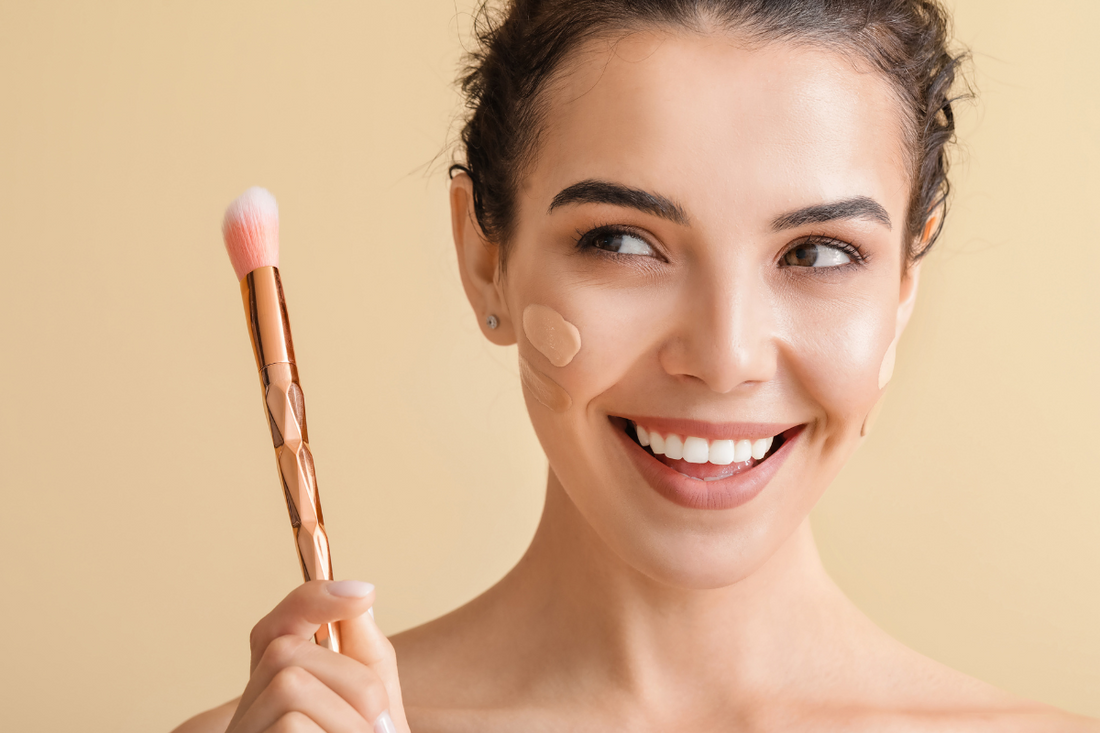
Foundation can be a game-changer in your makeup routine, creating a flawless canvas for the rest of your look. But with so many shades and formulas available, finding the right one can feel like searching for a needle in a haystack. But don't worry, we're here to guide you through the process!
1. Know Your Skin Type
Before you even think about shades, consider your skin type. This will help you narrow down the foundation formulas that will work best for you:
- Oily Skin: Look for oil-free or matte formulas that will control shine and keep your makeup looking fresh all day.
- Dry Skin: Hydrating foundations with ingredients like hyaluronic acid will add moisture and prevent your foundation from looking cakey.
- Combination Skin: A semi-matte formula often works best, providing a balance of hydration and oil control.
- Sensitive Skin: Opt for fragrance-free and hypoallergenic formulas to avoid any irritation or redness.
2. Determine Your Undertones
Undertones are the subtle colors beneath your skin's surface. They can be warm, cool, or neutral. Here's how to determine yours:
- Vein Test: Look at the veins on your inner wrist. If they appear greenish, you have warm undertones. If they look bluish, you have cool undertones. If it's a mix of both, you likely have neutral undertones.
- Jewelry Test: Another trick is to see whether you look better in gold or silver jewelry. Gold usually complements warm undertones, while silver flatters cool undertones.
3. Test, Test, Test!
- The Right Spot: Always test foundation on your jawline, not your hand. This gives you the most accurate match to your face and neck.
- Lighting is Key: Test in natural light whenever possible to get a true sense of the color. Artificial lighting can distort how the foundation looks on your skin.
- Let it Oxidize: Allow the foundation to sit on your skin for a few minutes to see how it oxidizes (changes color) as it dries. Some foundations can darken or become more orangey.
4. Consider Coverage and Finish
-
Coverage: How much do you want your foundation to cover?
- Sheer: Provides a light veil of color, perfect for those with good skin who want a natural, "no-makeup" look.
- Medium: Covers imperfections like redness or blemishes while still looking natural.
- Full: Provides maximum coverage for those who want to conceal discoloration or acne scars.
-
Finish: What kind of look are you going for?
- Matte: Provides a shine-free finish, ideal for oily skin.
- Dewy: Gives a luminous, hydrated look, perfect for dry skin.
- Natural: Offers a balanced finish between matte and dewy.
5. Don't Be Afraid to Ask for Help
If you're still feeling overwhelmed, don't hesitate to ask for help from a beauty consultant at your local makeup counter. They can offer expert advice and help you find your perfect match.
Bonus Tip: Invest in a good foundation brush or sponge for a flawless, even application.
Finding the right foundation might take a bit of experimentation, but with these tips, you'll be well on your way to achieving a flawless complexion that enhances your natural beauty. Happy foundation hunting!

